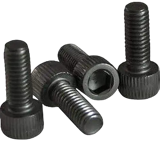It is widely used in industries requiring materials that can withstand high stress and strain, such as construction, automotive, and shipbuilding.
-
Composition:
- Carbon: High tensile steel contains a higher proportion of carbon, which increases its strength.
- Alloying Elements: Other elements like manganese, chromium, vanadium, and molybdenum are often added to enhance tensile strength, hardness, and toughness.
- Low Alloy Steel: High tensile steel typically falls under the category of low alloy steel, with specific grades that define its mechanical properties.
-
Properties:
- High Strength: Offers much higher yield strength (the stress at which material begins to deform plastically) and tensile strength (the maximum stress it can withstand without breaking) compared to mild steel.
- Durability: High tensile steel is known for its ability to withstand heavy loads without breaking or deforming.
- Lightweight: Despite its strength, high tensile steel is relatively lightweight, making it a favored material in automotive and aerospace industries where strength-to-weight ratio is critical.
- Corrosion Resistance: With added elements like chromium or nickel, some high tensile steels offer improved resistance to rust and corrosion.
- Ductility: It maintains a certain level of flexibility and can absorb energy during impacts, reducing the risk of brittle fractures.
-
Production Process:
- Controlled Rolling: High tensile steel undergoes a specific rolling process at elevated temperatures, followed by cooling at controlled rates, to achieve the desired mechanical properties.
- Heat Treatment: The steel is often heat-treated to further increase its strength and durability by altering its crystalline structure.
-
Applications:
- Construction: Used in high-rise buildings, bridges, and other infrastructure projects that require strong, lightweight materials to bear heavy loads.
- Automotive Industry: Used in the manufacturing of car chassis, reinforcements, and safety features due to its strength-to-weight advantage, contributing to fuel efficiency and safety.
- Shipbuilding: Ideal for ship hulls and offshore platforms because it can withstand harsh environmental conditions and high stress.
- Aerospace: Used in the construction of aircraft parts where both strength and reduced weight are essential.
- Heavy Machinery: Applied in the manufacturing of cranes, bulldozers, and other industrial equipment that undergo extreme operational stress.
-
Advantages:
- Strength-to-Weight Ratio: Provides superior strength without significantly adding weight, making it suitable for a variety of structural applications.
- Cost-Effective: Though it can be more expensive than standard carbon steel, its durability and strength reduce the need for additional material, making it cost-efficient in the long run.
- Improved Safety: The strength and resilience of high tensile steel make it ideal for industries where safety is critical, such as automotive crash protection.
- Fatigue Resistance: High tensile steel performs well under repeated stress cycles, making it suitable for parts subject to frequent loading and unloading.
-
Challenges:
- Weldability: High tensile steel can be more difficult to weld compared to mild steel, requiring skilled labor and specific welding techniques to avoid cracking or weakening the material.
- Cost: The alloying elements and manufacturing process can make high tensile steel more expensive upfront than regular steel.
- Brittleness: In certain conditions or at extremely low temperatures, high tensile steel can become more brittle, requiring careful consideration of its application environment.




![Sanding Sheets Abrasives [MSMEs]](/content/images/thumbnails/1078_160_sanding-sheets-abrasives-msmes-_.png)
![Flap Discs Abrasives [MSMEs]](/content/images/thumbnails/1080_160_flap-discs-abrasives-msmes-_.png)
![Sanding Belts Abrasives [MSMEs]](/content/images/thumbnails/1081_160_sanding-belts-abrasives-msmes-_.png)
0 Comment
Leave a Comment